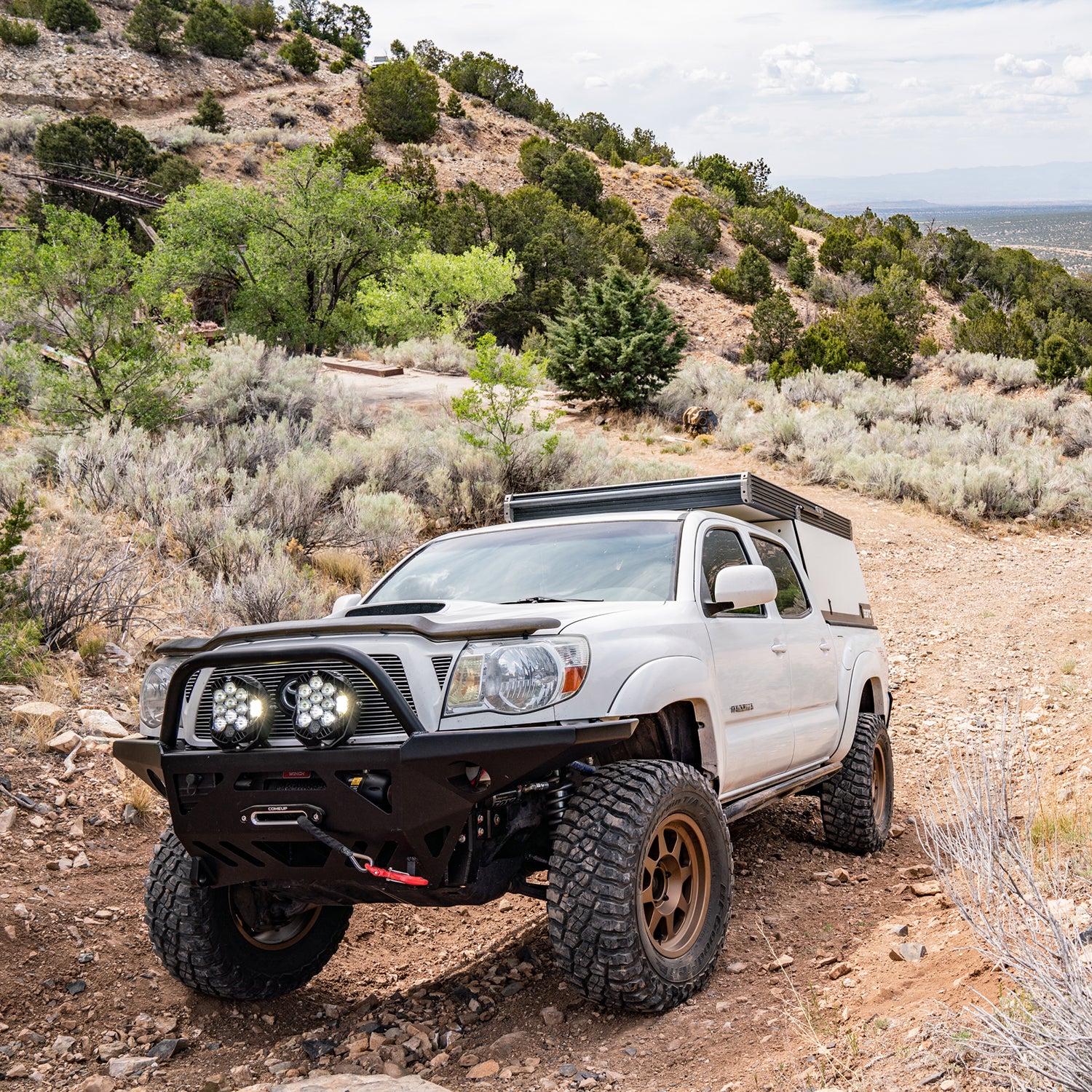I’ve owned a 2005 four-door Toyota Tacoma TRD Sport for a decade, and it’s easily been the most reliable, adventure-worthy vehicle I’ve ever driven. The thing was bone stock for years, but I’ve recently started to explore the aftermarket options to see if I could make it more capable for long overlanding trips with my wife and our two kids. I have no interest in rock crawling through Moab, but I do want to feel confident driving unmaintained roads and want upgrades that will make backcountry camping more comfortable.
I made my first round of changes back in 2016. Since then, I’ve been on many more trips (crazy treks through Baja, up and over scary Colorado passes, etc.), seen plenty more gear at Overland Expo, and asked for tons advice from experts like Walt Wagner, who owns , an expedition-vehicle shop in Albuquerque, New Mexico. As such, I realized there was a better way to do things (there always is), and I’m currently going through upgrade 2.0 to get even more capability out of this old beast.
Of course, with a lot of things vehicle-related, these upgrades aren’t cheap. But think of them more as items for the bucket list and pick one or two based on the qualities you really want more of from your rig.
Better Traction: BFGoodrich KM3 Tires and Method Race Wheels
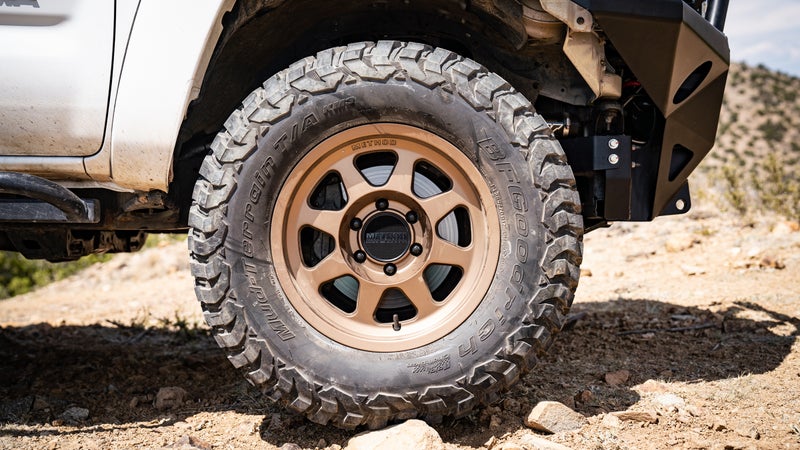
If you read Wes Siler’s column here at ���ϳԹ���, you know that he constantly hammers home that good tires are your first and most important off-road or overlanding upgrade. Quality off-road tires do a number of things. First, they provide better traction through sand, dirt, mud, snow, and anything else you might encounter while driving off the grid. Plus, off-road tires are designed with stronger sidewalls and shoulder sections, so you can let some air out of them to get more traction and not worry about ruining the tire. And because of that increased durability in the sidewall, shoulder, and tread, you’ll be less prone to flats out in the middle of nowhere.
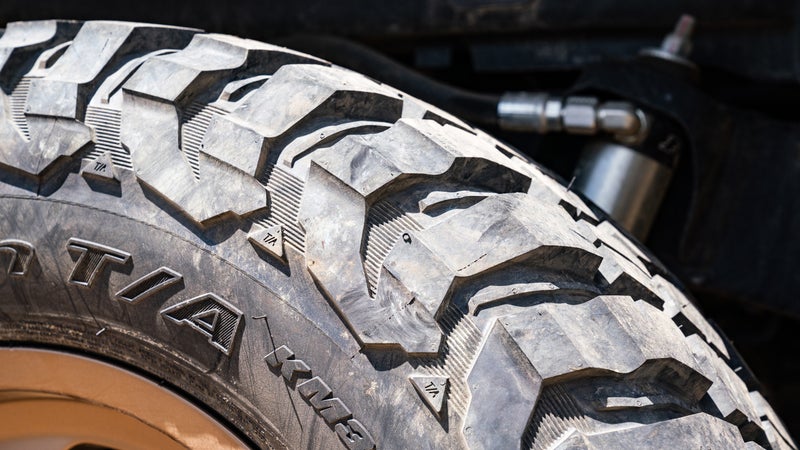
Right now, I’m using the brand-new , one of, if not the most, bombproof tires on the market. (Mine ran $290 per tire for size LT285/70R17.) The KM3 has a 27 percent stronger sidewall than the previous version, so you’ll worry even less about one tearing on a sharp rock 50 miles down a dirt road. The tires also have a smart tread pattern with larger biting edges that wrap around objects on the trail to increase your traction. They’re incredibly reliable in the mud and sand, because the lugs are spaced out just enough to dig in. And thanks to something called a “mud-phobic bar,” grime and muck won’t stick to them, so they’re ready to bite again on the next rotation. These are not street tires by any stretch, but the engineers made each tread a slightly different size—a trick that eliminates that annoying hum on the highway you get with many off-road tires.
Wheels also play a part in traction. In Albuquerque, wheels are all about style. The lowriders here sport that stand out and add character but do nothing to improve performance. Instead, I wanted a wheel with more off-road oomph. I found that in the new (from $180 per wheel). The design and materials—an incredibly durable one-piece cast 356 aluminum—allow the wheel to put up with abuse from all the junk you might meet on even the hairiest of forest trails—boulders, branches, etc. Almost more important, however, the wheel has small grooves in the bead channel (where the outer edge of the tire sits) that prevent the tire from slipping out when releasing a little air. This technology is a big deal, because the few times I’ve been really stuck, airing down to a lower PSI got me right out. With regular wheels, you run the risk of the tire slipping off when it’s not at full pressure—a giant problem if you’re not near a tire shop.
Better Handling: Fox Factory Race Series Coil-Over Reservoir Shocks and Total Chaos Upper Control Arms
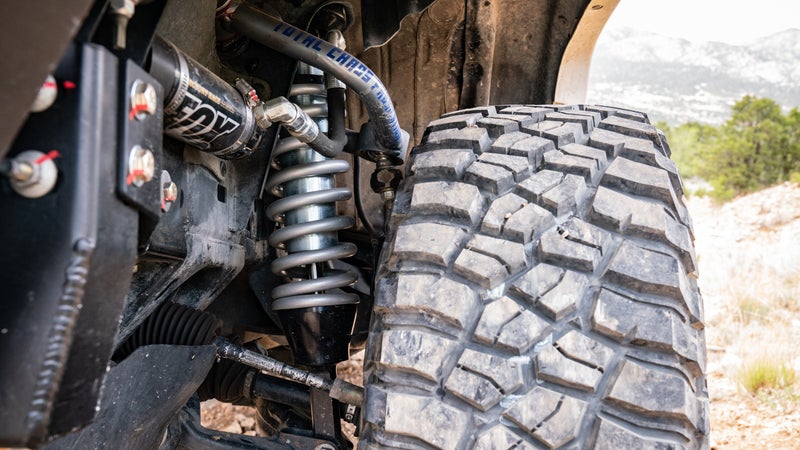
My first build had an Old Man Emu suspension kit (leaf springs and shocks) that was significantly more durable than my stock setup and helped my truck put up with bumpy dirt roads and not sag under the weight of a rooftop tent and truck drawers. I’ve kept the OME leaf springs, but recently swapped in ($1,600 for the front; $1,200 for the rear). This setup is significantly more durable than stock but comes with additional upgrades that the OME system didn’t have. For example, just like a good Fox suspension system on your mountain bike, my setup can be dial-adjusted to be more forgiving for technical rocky terrain or stiffer for flat, smooth driving—something that provides much better truck handling. I also have upgraded, more durable ($750) that work in conjunction with the Fox setup and are better for blasting down washboarded roads or climbing over chunky rocks.
Better Protection: Front Bumper
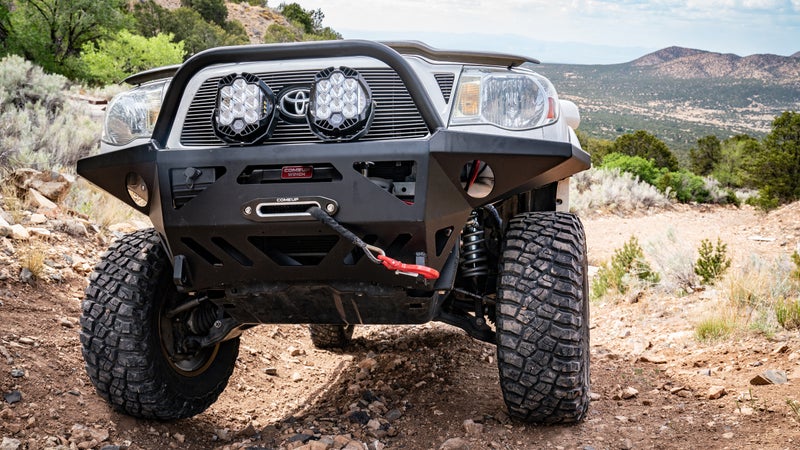
There’s no need for an aftermarket bumper if all you want to do is drive up washboarded or rutted-out roads to access your favorite trailhead. But if you start driving on more technical trails, or in the sand, mud, or snow, it can make a difference in many ways. The perks are threefold: A bumper increases your truck’s approach angle, so you can climb seriously steep hills without rubbing against the ground. An aftermarket bumper provides more protection when you’re driving over rocks and scraping trees. Aftermarket bumpers also allow you to accessorize. My lightweight aluminum (from $999) has a Comeup ($1,100) for getting me unstuck in an emergency, as well as two ($600 each) that combined put out a ridiculous 22,050 lumens.
Increased Comfort: Go Fast Campers Platform
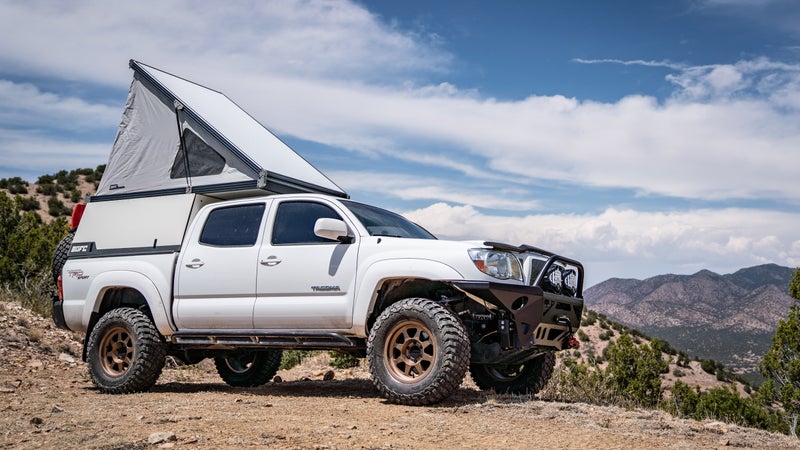
I’m running the brand-spanking-new (from $5,750). Go Fast Campers, based just outside Bozeman, Montana, was the talk of the most recent Overland Expo because its platform combines a camper shell and rooftop tent. That camper/tent combo is hugely convenient because you never have to mount or unmount the tent, which can be a pain in the ass. The combo system is also more aerodynamic than a rack and rooftop tent, so you save gas. When you’re ready to sleep, the tent sets up in less than 30 seconds and comes with a three-inch foam mattress, windows, and big front door. During the day, the tent can be used as a —you just remove one section of the bed, set up your laptop on the other, then stand in the truck bed and work away. The camper shell itself is made from ultradurable welded-steel tubing that can take a beating on dirt roads, and all three sides of the shell flip open so you never have to crawl inside your bed to access the storage. The ultra-low weight helps my truck perform better off-road, and helps a ton with fuel costs.
More Convenience: Dometic Fridge
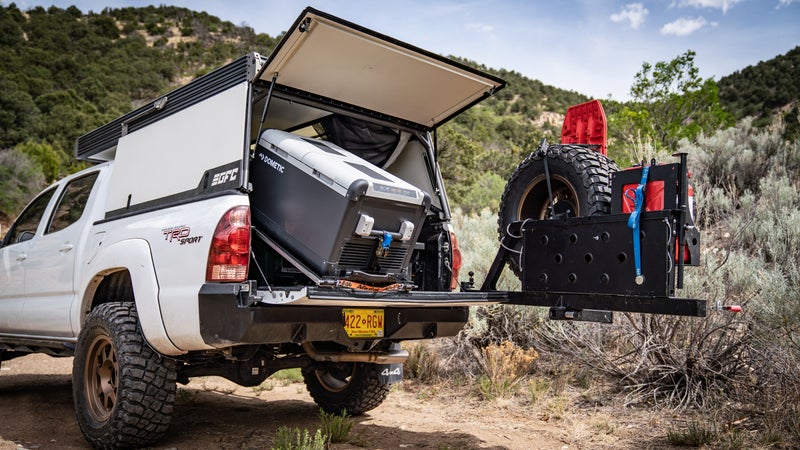
This might seem like an odd inclusion compared to the other, more structural upgrades, but it’s on this list because I can’t overstate the importance and convenience of an overland refrigerator in your truck when you’re camping way off the grid. Ice will keep for a couple days, no problem, but when you want spend a week in the Utah desert and never worry about your food going bad or getting soggy, a truck fridge is your only option. They’re expensive but pay for themselves in what you save on ice and spoiled food. I’m running one from ($1,100) that’s crazy efficient and uses only one amp per hour on average over a 24-hour period. When I’m driving, I run the fridge through a cigarette lighter I had installed in the bed, but you can also run it off the one in your console. At camp, I use a , which produces plenty of juice to keep the fridge running. My fridge is mounted to an ($480) that pulls out of my truck and then tilts down so I can access everything inside.


